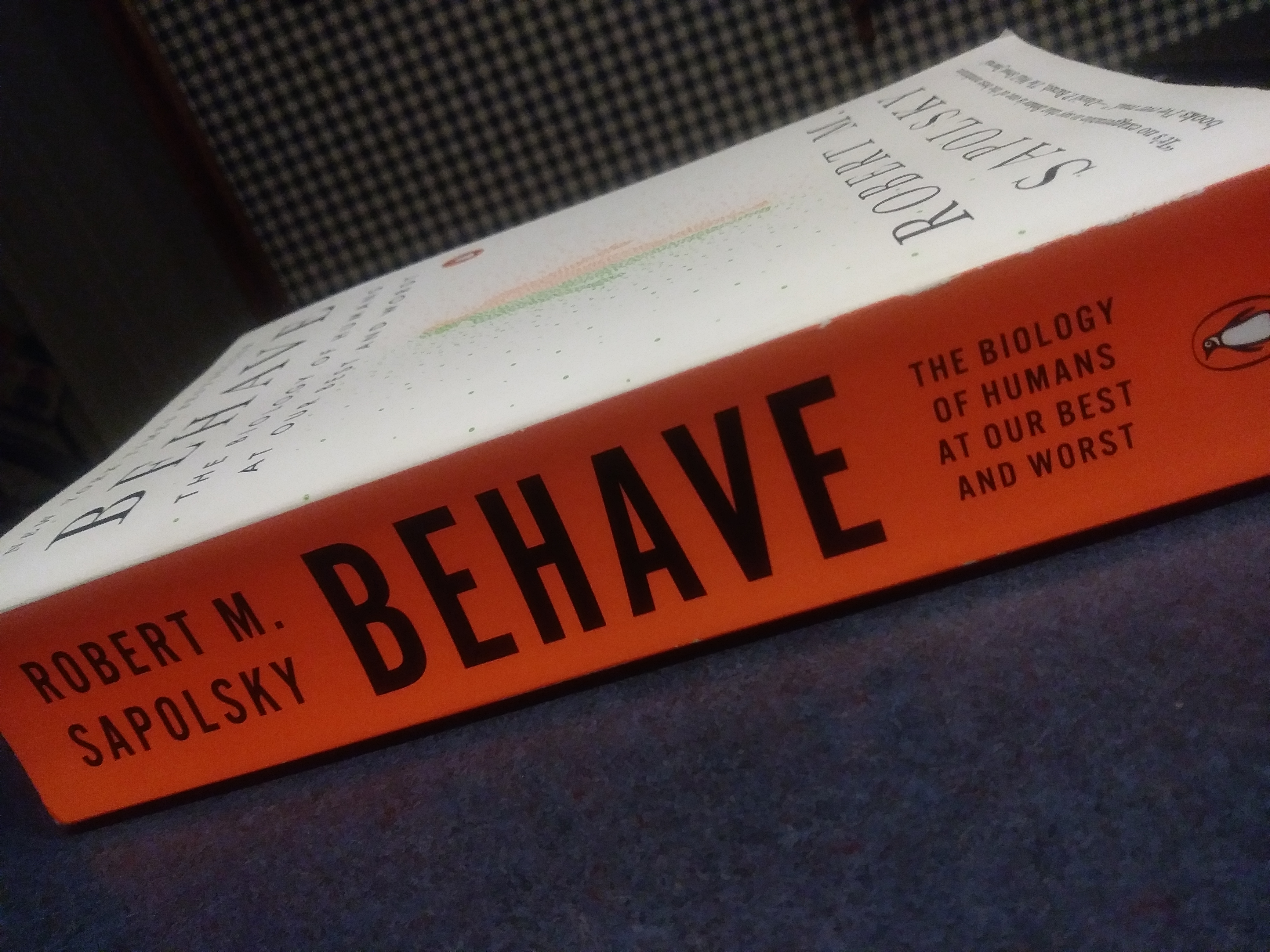SEPTEMBER 17, 2019 – Our family has a favorite story, originating with my younger sister and featuring the word, “behave.” Actually, it’s two words. The tale goes like this . . .
My sister Jenny was on an extended tour playing violin in the orchestra of an opera company. In a rather obscure and underserved part of the country, the musicians were afforded a long-awaited opportunity to hop off the tour buses and grab some snacks and necessities. The “venue” was a small mall anchored by a Piggly-Wiggly. Near the end of the chips and crackers aisle, Jenny heard an explosion from the cereal zone, next aisle over. It turned out to be a Vesuvinus parental beratement of a young kid. Just as Jenny poked her head around the end cap, the eruption was at its peak.
“I’ve got two words for you, Spatula [the kid’s name, apparently],” said the mom. “Be – hāve!”
Behave—one word—by Robert Sapolsky was my book club’s book this month. When I saw the title, I couldn’t help but think of Jenny’s encounter with the bifurcated version of the word shouted as a frustrated mother’s command.
The book is not an easy read, nor is it a short one weighing in at 773 pages, including notes in size 2 font. The work needs to be taken in bites and chewed well to be digested successfully. Sapolsky, who is a neuroscientist and primatologist, is a funny and personable writer who makes you feel comfortable even while learning to swim in water way over your head.
The book reveals brain-bending research about . . . the brain and explores the multiple factors that make up human behavior. Intrinsically fascinating, the book allows a deep understanding of why we think and act—behave—the way we do. It’s an essential read for anyone who has to deal with, uh . . . people; in other words, it’s a book for everyone because it’s about everyone. But look out—unless you’re at least a physician (or a neuroscientist!), Behave requires patients; I mean patience.
So many factors mingle to determine a person’s behavior, it’s impossible to isolate any one of them hermetically. Our brains are complicated parallel universes, and yet, in many ways, we carry on much as other creatures do, or at least those of the mammalian persuasion.
I think that perhaps an alternative title for Behave might be, We’re Screwed . . . but maybe not. This would be apt, for on one level, complete and constant rationality in human behavior is damned near impossible. Much of what we think (or don’t think) and do produces flat-out wrong and bad results. That’s the “we’re screwed” part. Yet, thanks to physiological, and, I dare say, a fair amount of societal, evolution, our brains and behavior can still change, can still advance the human cause, as it were, for the better.
The bottom line here is that to continue to survive and thrive, we need to buckle down. We need to leverage our learning and dedicate ever more resources to scientific research. We need to be – hāve as well as we can.
(Remember to subscribe to this blog and receive notifications of new posts by email.)
© 2019 Eric Nilsson
